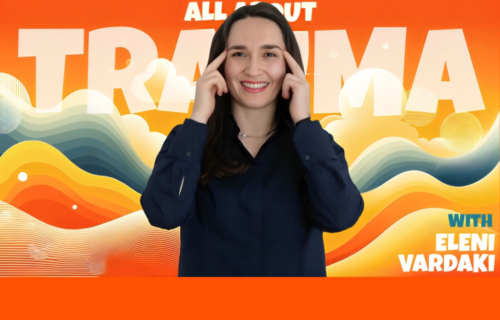
Middle School Students, Mindfulness and Mandalas
GUEST WRITER: Andrew Mitchell, the MYP Coordinator at BEPS International School of Brussels, reflects on his experience of using mandalas to teach mindfulness to Middle School students. In this article, you will learn:
- Why the Middle School teachers at the BEPS International School tweaked the school timetable – and why that wasn’t enough.
- Why a Middle School teacher decided to introduce mandala meditations to his Middle School students.
- The two biggest lessons a Middle School teacher learned from the process of testing out different mindfulness exercises designed to help students focus.
MIDDLE SCHOOL STUDENTS, MINDFULNESS & STUDENT VOICE
Lila (aged 13): “Mr Mitchell, when we do mindfulness meditation in the morning I just get sleepy for the next class. I thought we were supposed to become more awake and focused?”
My initial reaction to this was to be defensive of the practice; I had read numerous articles, posts on social media. I was even in the midst of a Buddhism and Modern Psychology course. I had studied in a Tibetan university in Sarnath. For goodness sake, of course it will focus you, Lila! Monks and laypeople have been doing it for centuries.
Mindfulness is even part of the International Baccalaureate Middle Years curriculum.
Instead, I answered, “Well, it is one way of focusing your mind, and with practice it can be helpful. But I hear what you are saying and will think about how we can do things differently next time.”
MINDFULNESS AND STUDENT LEARNING NEEDS
A few weeks before, at a collaborative planning meeting, we were discussing that students were taking time to “get going” in the mornings. They were often passive and not at their usual engaged selves.
When establishing the school and timetabling, we had made a conscious decision to schedule active and/or creative subjects early in the day to avoid this, but something still wasn’t right.
So with a slight tweak of our timetable we created 10 min each morning to trial a variety of tuning in and warming up activities like Monday mindfulness, running around the block, physical challenge games, and so on.
The idea was to tune in and wake up… but it still wasn’t working (at least not for Lila). So I switched the approach for the next session, kept a short focus on breathing and posture and then had the students spend 10 minutes colouring mandalas, eyes open but quietly concentrated on colouring the simple repeating patterns. The focus was there, and it created the atmosphere we had been looking for at the beginning of the day.
“What was going on?”, I asked myself. “Why wasn’t the simple meditation working? Was I doing it wrong? Maybe I should study some more, read some more?”
REFLECTIVE PRACTICE
Then I was reminded of something my Geshe La [the title of Geshe is conferred on Buddhist scholars and literally means ‘Virtuous friend’ and La is a form of honorific or conveying respect. A nice way to think about the teacher student relationship] in Sarnath had once said. He told us, quoting from an old scripture: “We should examine the dharma (teachings of the Buddha) like a goldsmith, testing it by rubbing, burning and cutting it. Don’t accept it merely out of reverence.”
This was exactly what Lila was asking me to do with our Mindfulness sessions. I had deemed it important for our students to cultivate this state of mind, I accepted it out of reverence for my previous teachers, and all educators and professionals who include it in their holy 21st century skill sets. I asked my students to accept that it was good for them, because I said so. But Lila was being a master goldsmith and I was having to change my approach.
What I am not saying is that the key to good mindfulness practice in the classroom is short focused breathing and coloring mandalas for 10 minutes.
I am saying that we often make choices about what we find worthy of adding to our learning ecosystems.
We go to conferences and find pieces of gold which we want to give to our students. But we need to allow them to be tested, to be rubbed cut and examined by the students. We need to ensure that we give them the space to shine; but if they don’t, then we need to allow them to be reworked or even discarded.
A whole list of lessons could be taken from this, but my lesson was clear. Listen to student voices, create a space for them to say what they think and develop their own opinions and allow them to guide your practice. My other lesson was to allow the space in your practice for growth and development. We rarely get things right the first time, but by applying an iterative approach we will rub, burn and cut our own practice moving in the right direction. Maybe, eventually turning a good idea into something gold.
I believe that implementing new ideas in schools, following trends in education and developing an exciting and interesting curriculum can be both challenging and rewarding. Let’s be brave enough to try, and humble enough to change. After all, most of what we do as educators has a positive impact on student learning, some impacts are just bigger than others. Listening to students’ voices doesn’t just make for happier and more engaged students but can also help us uncover the approach that works best.
ABOUT THE AUTHOR

Andrew Mitchell is a curriculum coordinator at BEPS International School, Belgium, a brand new school with a future-oriented view of education. He’s worked in Australia, Japan, Thailand, China, Belgium and The UK. He’s passionate about helping learners love learning, and creating environments where learners have fun, are challenged and can be themselves.




